Xinyi Qiu

Master of City Planning candidate, 2021
Weitzman School of Design
University of Pennsylvania
Concentrated in Sustainable Transportation and Infrastructure Planning
Contributed to the study of micro-mobility, transit equity and emerging transportation mode
View My LinkedIn Profile
Portfolio
Planning Workshop: North Delaware Ave Corridor Plan
Connectivity Existing Conditions
Alternative Plan: A Riverfront for Community
Recommendation: Lower Aramingo Ave- Maintaining Affordability

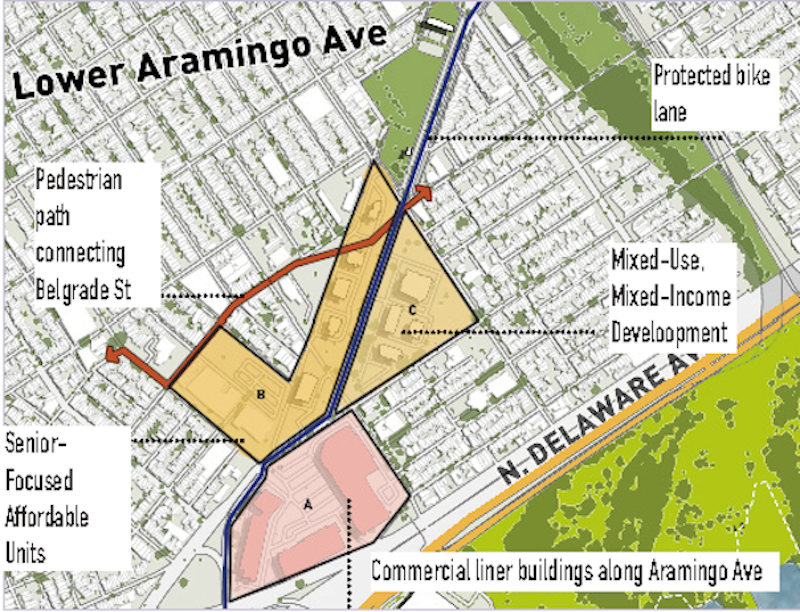

STATISTICAL & SPATIAL ANALYSIS
JavaScript, HTML & CSS
Exploring the Economic Impact of San Francisco’s Transit Oriented Developments
This online map tool is designed to examine the economic impact of Transit Oriented Developments in San Francisco. It fetches the data from DataSF Property Tax Rolls dataset based on users’ inputs, including the property use, year and neighborhood. The online map tool would generate comparison plots on property values and built years between different distances from the BART stations.

Analysis of Philadelphia Crashes in 2017
R
E-Scooter Trips Prediction in Philadelphia: Case Study of Minneapolis
Micro-mobility is seen as a solution to alleviating the last-mile gridlock, especially shared and dock-less electric scooters. However, legalizing them in Pennsylvania is still at a stand still for two years due to safety concerns. COVID-19 might be a turning point for cities to reconsider e-scooters as a legal transportation method because it enables people to open to the air and keep socially distant at the meantime. This project aims to explore the spatial-temporal e-scooter trip pattern in Minneapolis and build the model to predict the probable spatial pattern of e-scooter in Philadelphia in the future. The project used stepwise regression method with log-transformed dependent variables, outflow trips and inflow trips, to build the models.
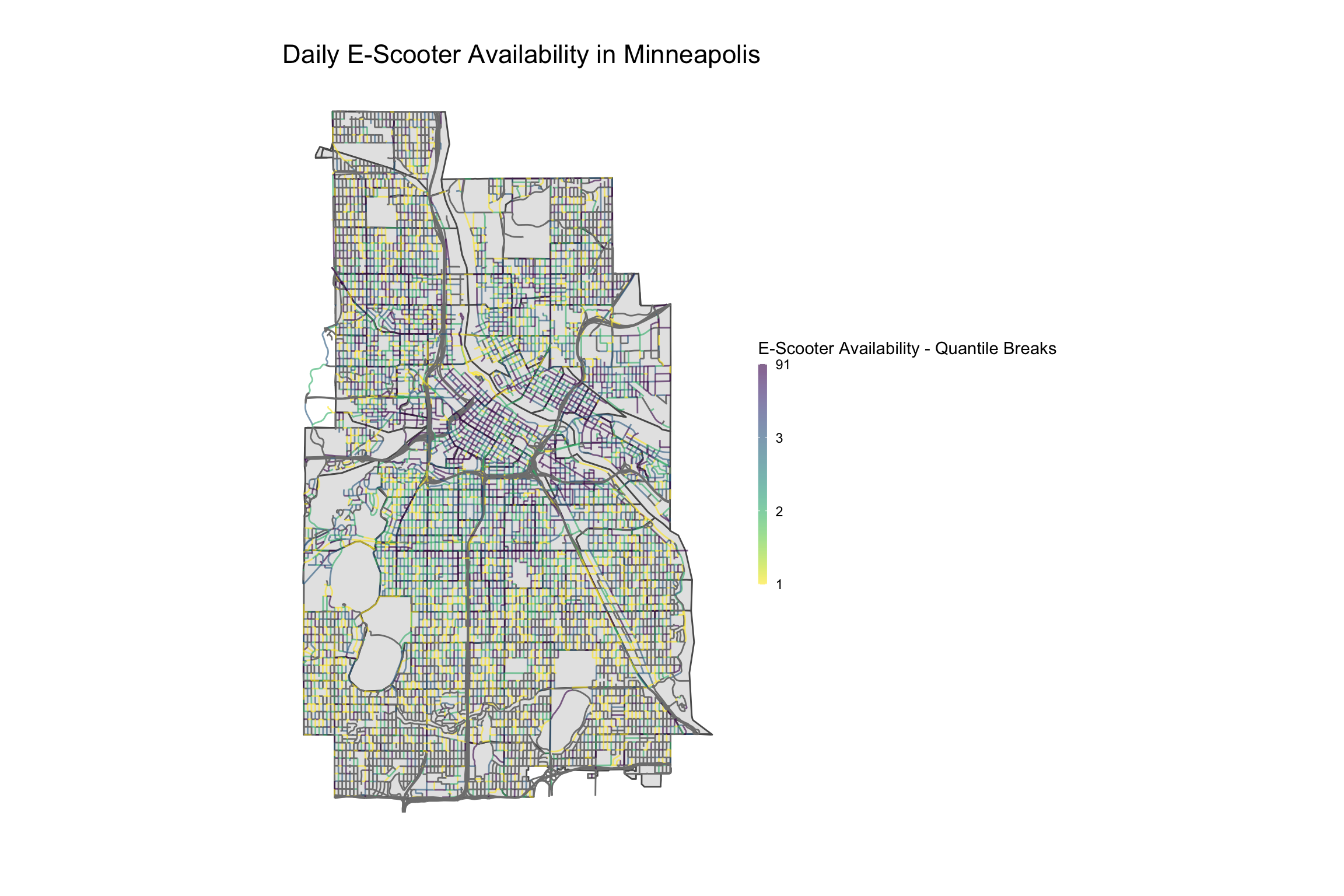
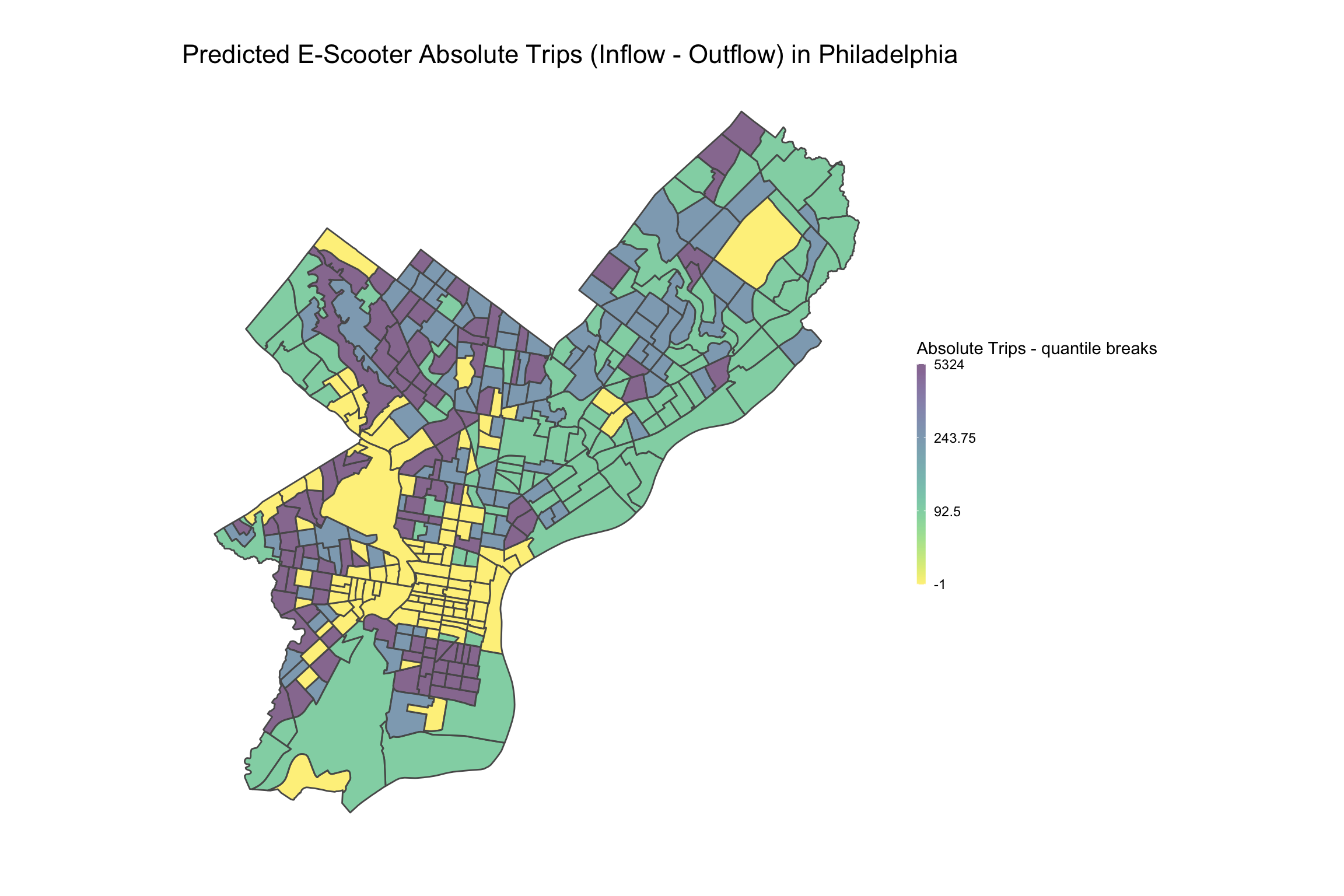
Predictive Modeling for Flood Resiliency: Calgary, Canada and Denver, Colorado
- Video Demonstration
The purpose of this project is to develop a predictive model that predicts
the probability that an area will be inundated with flood water. The model has been trained and validated on Calgary, a Canadian City in Alberta, and then used to predict for a comparable city, Denver Colorado. This report will explain the planning motivation as well as illustrate the environment features, model performance, and prediction results.
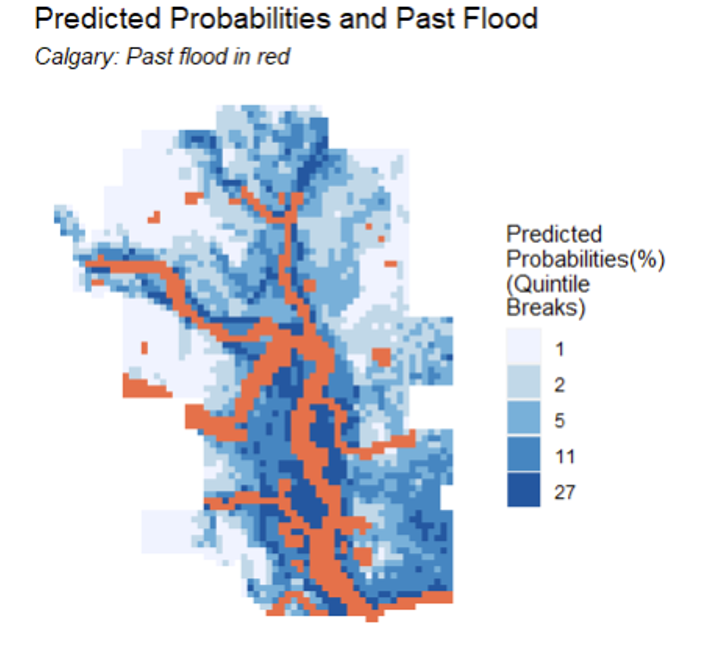

Philly 311 Call Data Analysis
Philly 311 is a telephone and web services that allows residentis to report nonemergency complaints on city services directly to relevant departments. This analysis figures out the priority problems of city services on Census-tract-level and street-level, and helps the governmen† make data-driven decisions on improving Philadelphia city services.
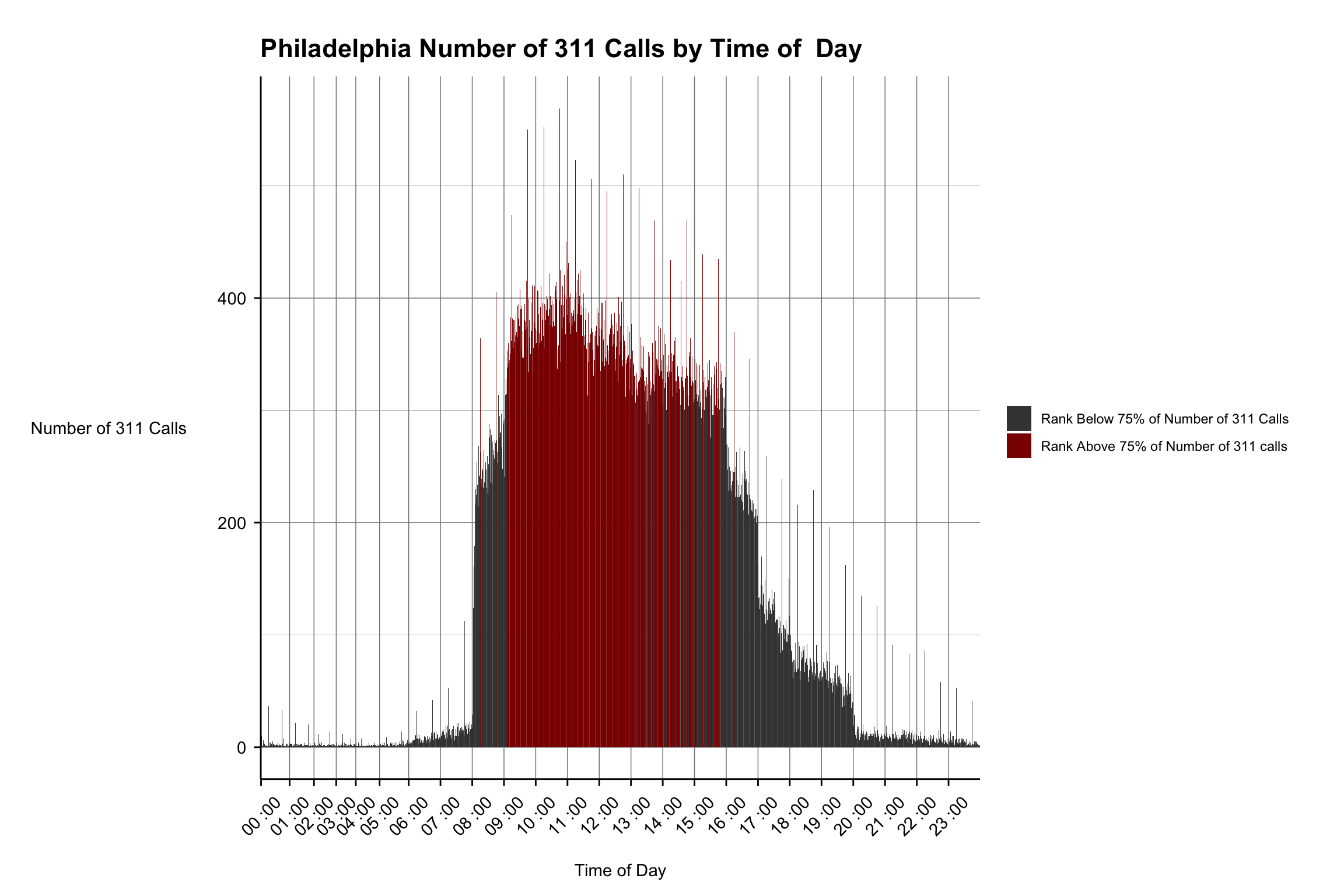
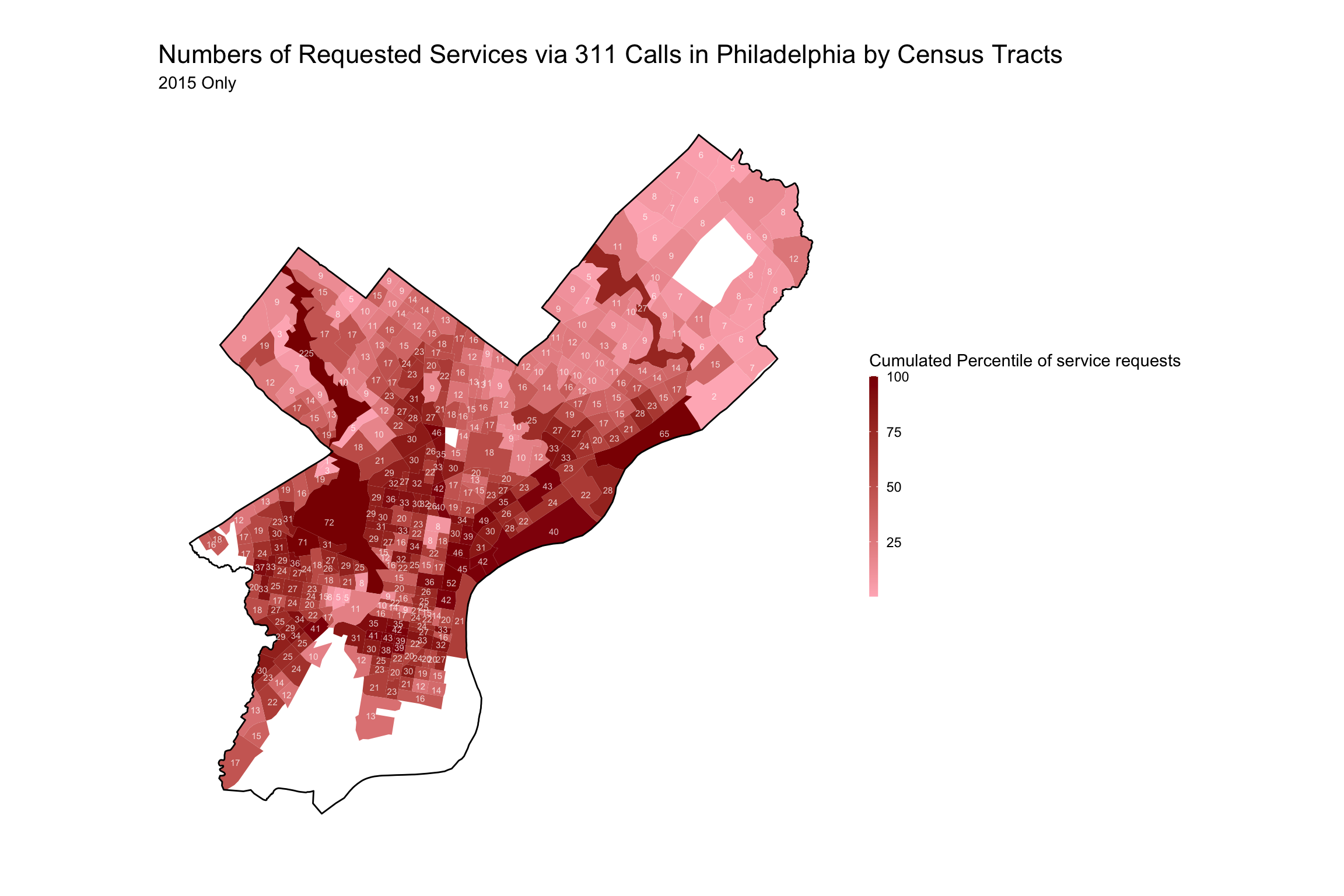
[Visualization of SWA Airlines Flight Routes and Total Flights Across the United States During January 2021]
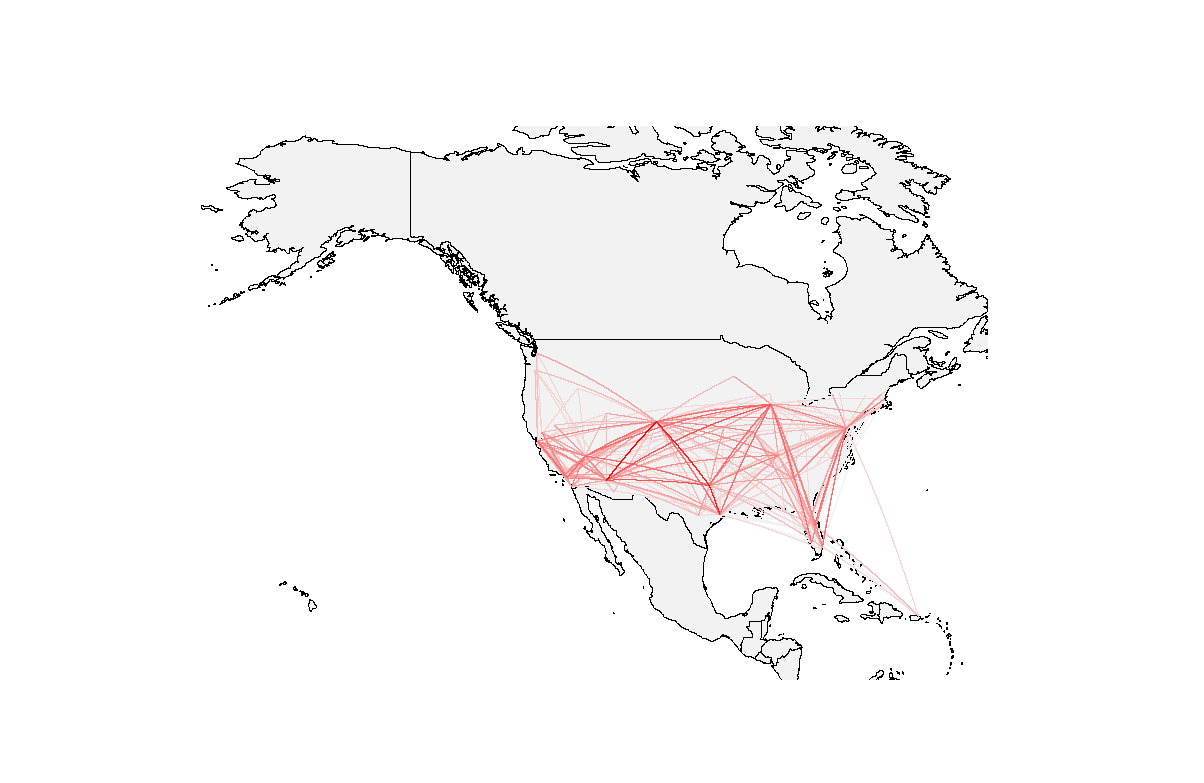
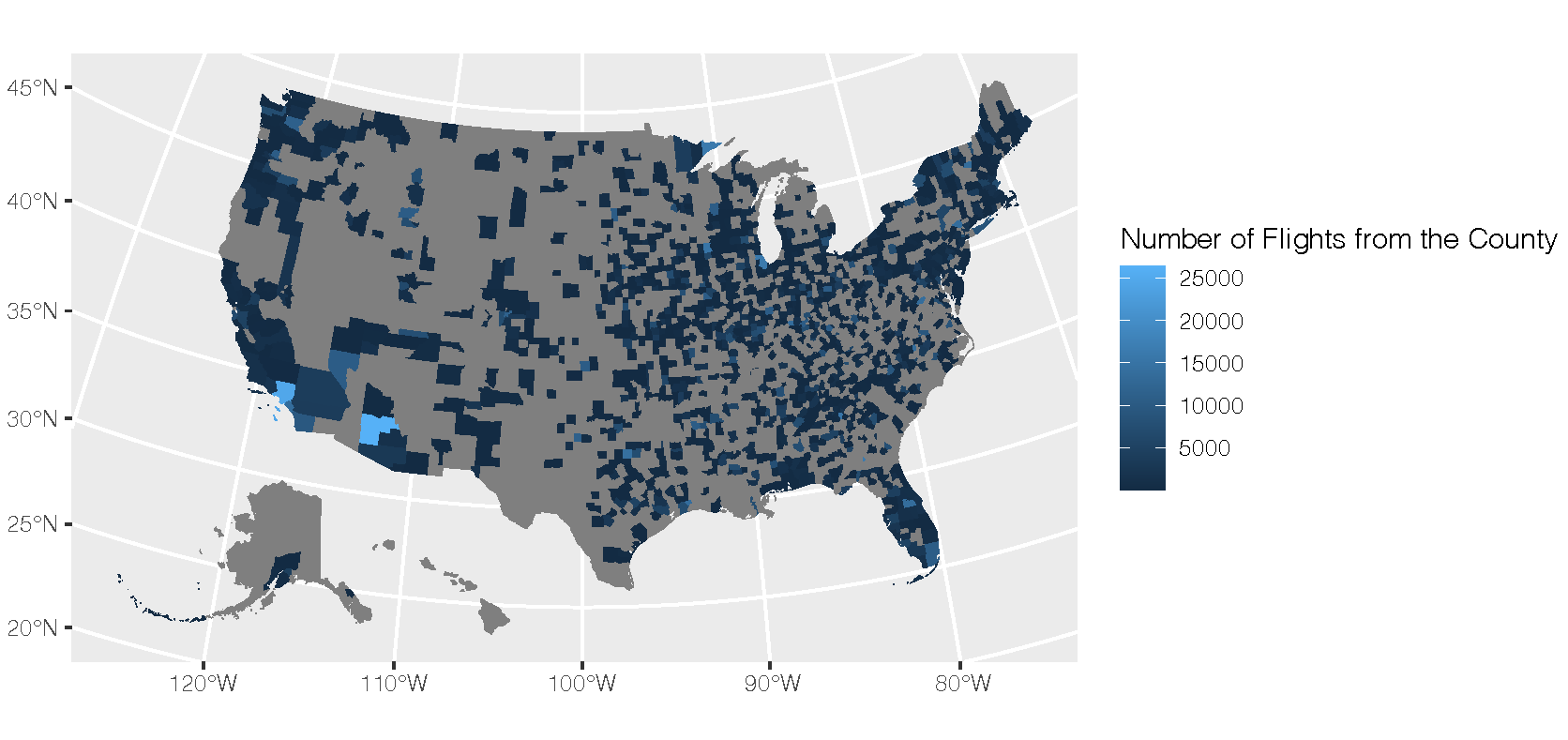
ArcGIS
Mapping the Relationship between Vegetation and Poverty & Race in Philadelphia
Abundant research proved that access to greenspace varies highly based on income, level of education, gender, race, age and other socioeconomic and personal characteristics differences. A common finding is that income and level of education are positively correlated with a greater accessibility to greenspace, while low-income, racial minorities and other vulnerable groups in the city have less access to vegetation. According to the reports, this situation is happening in Philadelphia, especially the lack of trees in poor neighborhood. We need to ensure if it is true and where exactly demand for more trees. The analysis figures out the imbalance of accessibility to vegetation between different income groups and races, which is the legacy of structural racism in Philadelphia.


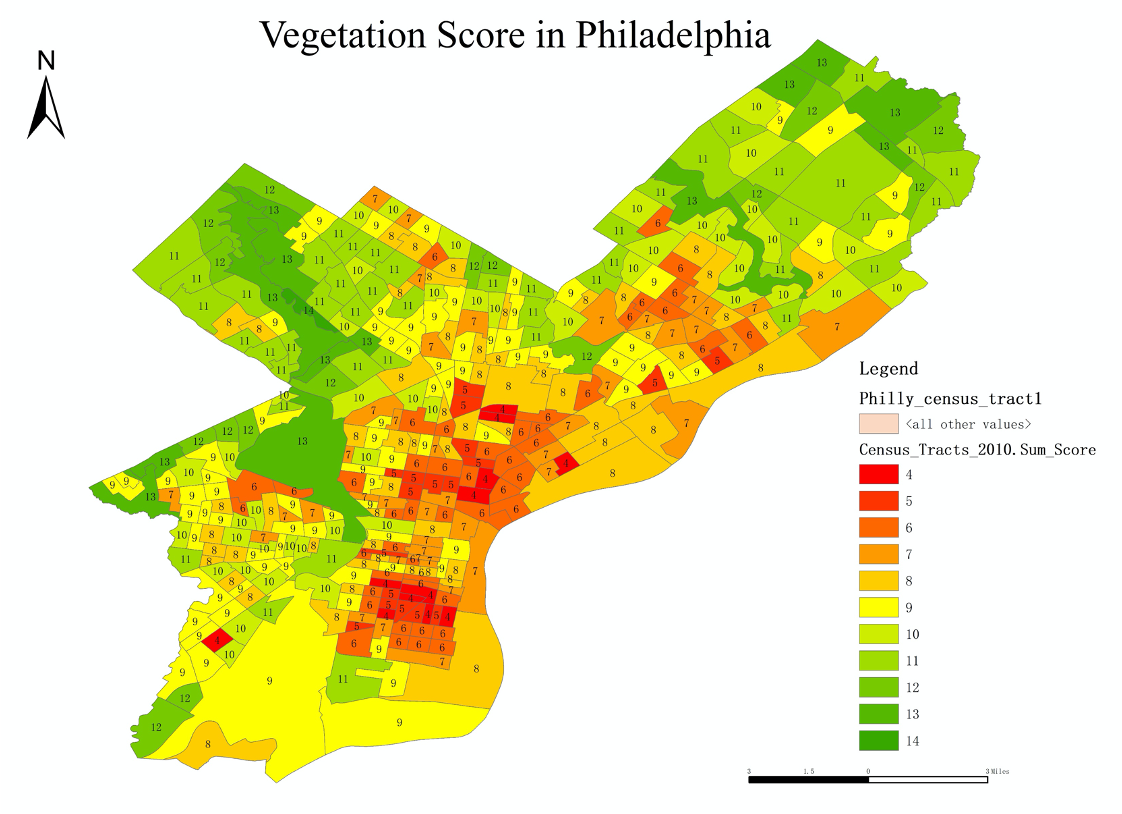
Google Earth Engine
Finding Suitable On-Road Testing Sites for Autonomous Vehicles in Philadelphia
The widespread of Autonomous Vehicle (AV) has never been seen as close as it seems now with the confluence of advanced technologies and supportive regulations from local governments. The United States (US) is home to companies that lead the world in AV development, contributing to strong performance in technology and innovation ranking No.1 around the world1. In the Automated vehicles 3.0 published in October 2018 by the US Department of Transportation, it declared principles towards AVs including prioritizing safety and preparing for automation through guidance and pilot programs, etc.
Pennsylvania, with two world-class research universities, Carnegie Mellon University and University of Pennsylvania, has emerged as a leading location for on-road testing of HAVs. To ensure the safety on road, Pennsylvania has passed two laws related to autonomous vehicles and regulations by the department of transportation. However, there is still a long way to go to avoid the fatal accident in Arizona. The safety of AVs on road depends on the operation system, human behavior and external environment. While engineers are working on the technologies of AV itself to improve the safety and accuracy of system, we, as a transportation planner, will work on the road infrastructure and regulations on AVs. The term project aims to provide a baseline for PennDOT to regulate the location where AVs could test on road, considering the AV’s reaction to the external environments, including road conditions, geological conditions, weather conditions and demographic conditions.

Writing Sample
Op-Ed: Transit Service Cut is Exacerbating the Transit Inequity in America: How we fix it
Public transit has been pushed to the brink due to Covid-19 lockdowns around the United States. At the ITE annual meeting on August 13th, Neil Pederson, TRB Executive Director, noted that as of the end of July, DS Metrorail and New York MTA commuter rail still revealed 90% and 78-84% reduction in travelers compared to the same time last year. This sharp and lasting reduction in ridership led to the severe fiscal deficit in public transit systems across the country. To react, many transit agencies chose to cut the services and limit the capacity to save money and protect the safety of drivers and riders. However, these changes highlighted and increased the inequality in public transit in the United States.
BART Sustainable Financial Strategy During and After the Pandemic
As the fifth-busiest heavy rail rapid transit system in the United States, Bay Area Rapid Transit (BART) provides fast and reliable service in connecting San Francisco and Oakland with multiple suburban area in different counties. For more than 60 years, BART brings more convenience to residents and travelers through downtown, shopping area, offices, tourist sites and other destinations. As a long period running economy entity, BART authority sustains its physical service with unique funding structure. However, like many other transit agencies, it faces similar financial obstacles and deficit. BART authority develops its own funding solutions in getting rid of these issues. In addition, BART authority has also published relevant financial policies to ensure its aim of keeping operation cost within estimated revenue compensation.
Downzoning and restrictive zoning regulation in the Society Hill has raised a debate among different group of people, like planners, preservationists, residents in and outside the neighborhood, regarding the conflict of historic preservation and affordability and the rationality of councilmanic prerogative. This paper will examine the legal aspects of the rezoning in the Society Hill from the perspective of historic preservation, Fair Housing Act and councilmanic prerogative.
Page template forked from evanca